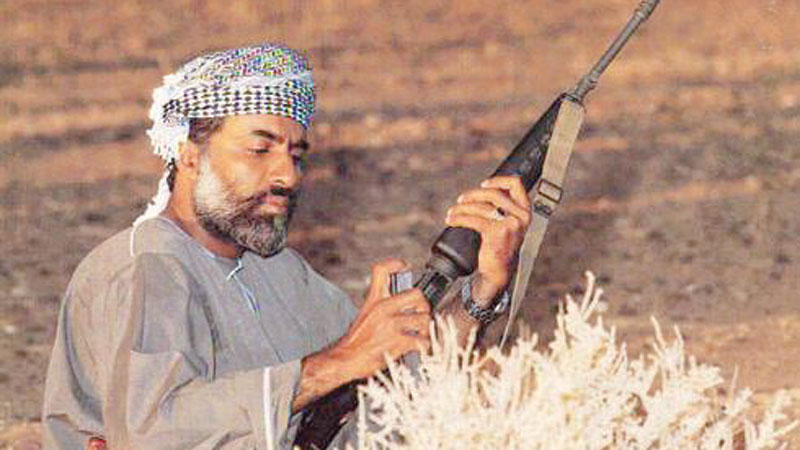


Dr Khaled Douglas -
At a time when Oman was slowly emerging from dark ages and taking its first steps towards modernity amid the sweeping winds of globalisation, His Majesty Sultan Qaboos held the banner of development on the one hand and the preservation of heritage and culture on the other hand.
He believed that it is not acceptable for development and modernity to erase the ruins of the past and tradition. Likewise, it is not permissible for heritage to stand in front of the wheel of development. With this philosophy and wise vision, His Majesty Sultan Qaboos turned the helm of the Sultanate towards the shores of progress and prosperity.
One of the first challenges that HM Sultan Qaboos faced in building the modern state and what relates to preserving heritage was building a modern capital that is in line with the requirements of a modern state. The historic city of Muscat has been the capital of Oman for hundreds of years. It was small and surrounded by a defensive wall so the choice was difficult between keeping it as it is or to develop and expand it. This will of course, be at the expense of the small historical city and it may threaten its architectural and cultural elements, consequently leading to the neglect of the old city and perhaps its gradual demise. The Sultan’s wise choice was to work on preserving the old city as the core of a larger city that extends beyond its borders, while preserving its name, Muscat. With this solution, Sultan Qaboos was able to maintain the ancient heritage of the city and at the same time he modernised it so it became an icon that narrates the story of the Omani people through time, visited by tourists from all over the world.
In order to preserve the Omani heritage systematically and institutionally, Sultan Qaboos established a special ministry concerned with the archaeology of the Sultanate and preserving its heritage. In 1976 the Ministry of National Heritage was set up, which was later renamed in 2002 the Ministry of Heritage and Culture. One of the main tasks assigned to this ministry was to enact specific laws in protecting heritage and archaeological sites. It also encouraged archaeological missions and recruiting numerous experts from various countries to study the archaeology of Oman. This ministry contributed in the discovery of thousands of Archaeological sites throughout the Sultanate, whose history extends from the earliest Stone Ages to the Late Islamic periods. This ministry also contributed to the study, documentation and restoration of a large number of Omani castles and forts, which have become one of the most prominent evidences of the ancient history of the Sultanate, in addition to, the ministry’s aid in adding a number of archaeological sites and heritage items on the Unesco World Heritage List.
Following up on HM Sultan Qaboos’ views on the need to pay attention to heritage in the modern Omani state, a Department of Archaeology at Sultan Qaboos University was set up in 1993 in order to train Omanis in archaeology so that they can actively participate in the management, study and protection of Omani heritage. The Department of Archaeology, with many field work, has resulted in the discovery and excavation of large numbers of archaeological sites in various regions of Oman. So this department participated in providing Oman with a number of qualified local archaeologists who are now managing and organising archaeological research work in various parts of the country including the Ministry of Heritage and Culture and a number of government and private museums.
HM Sultan Qaboos raised awareness about the importance of heritage by establishing a large number of private and government museums in the Sultanate. Recently, those efforts culminated in the inauguration of the National Museum, which is considered a national achievement with distinction in the field of heritage preservation. It is considered an impressive architectural and artistic icon added to the accomplishments achieved during the reign of HM Sultan Qaboos. However, he did not stop at these achievements and was seeking until the last moments of his life to accomplish another mighty work in the field of heritage. He was working on building a new museum (Oman Through Ages). It is now in its final stages but as fate would have it our beloved Sultan Qaboos passed on before the museum could open its doors.
Sultan Qaboos’ achievements were concerned with protecting heritage and also enhancing the identity of the Omani people. This was to ensure that the people would be proud about their heritage, whose roots are deep in history, and for them to be able to understand it and pass on the ancient stories to the future generations.
The writer is Head of Archaeology Department, Sultan Qaboos University
khalidd@squ.edu.om
Oman Observer is now on the WhatsApp channel. Click here



